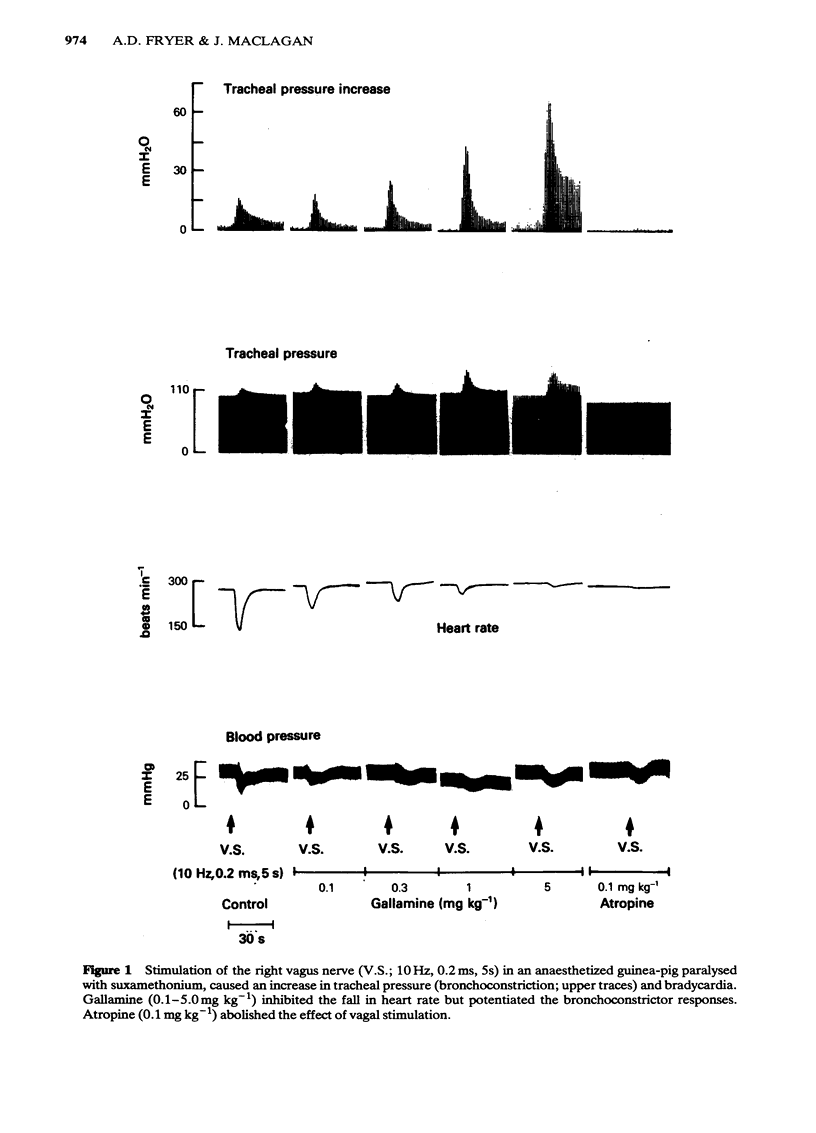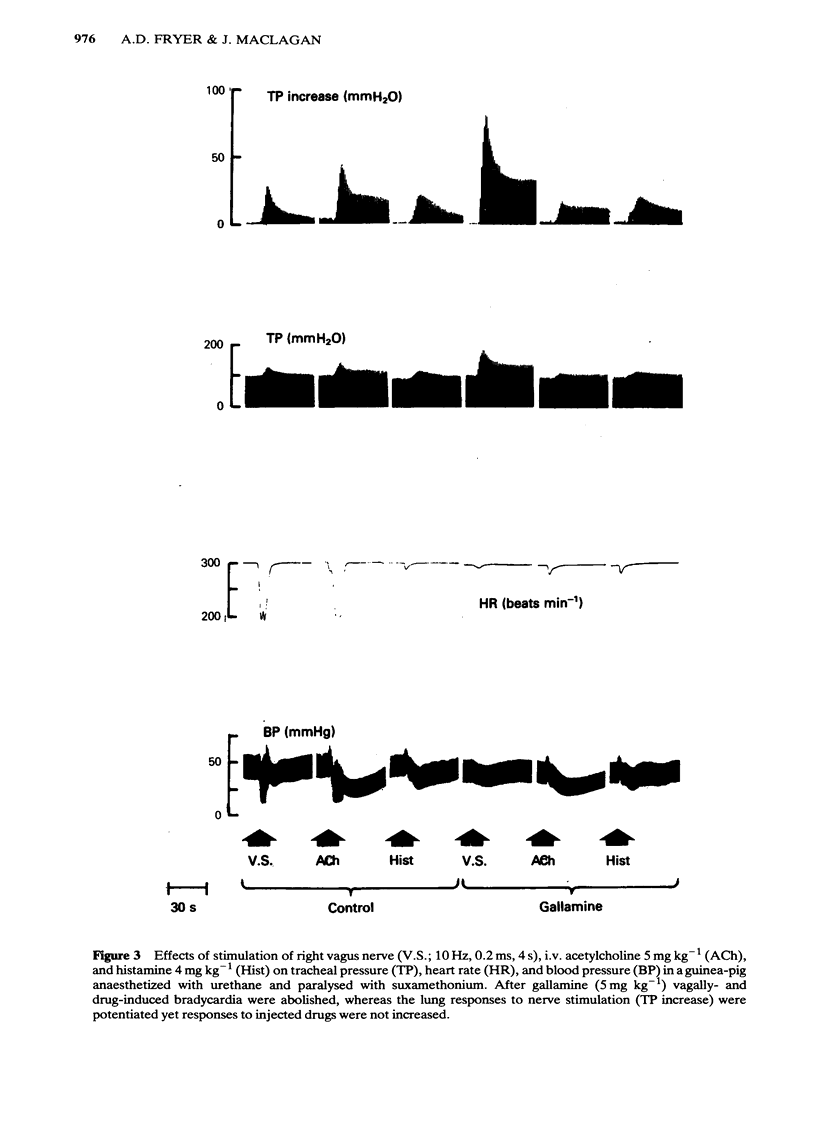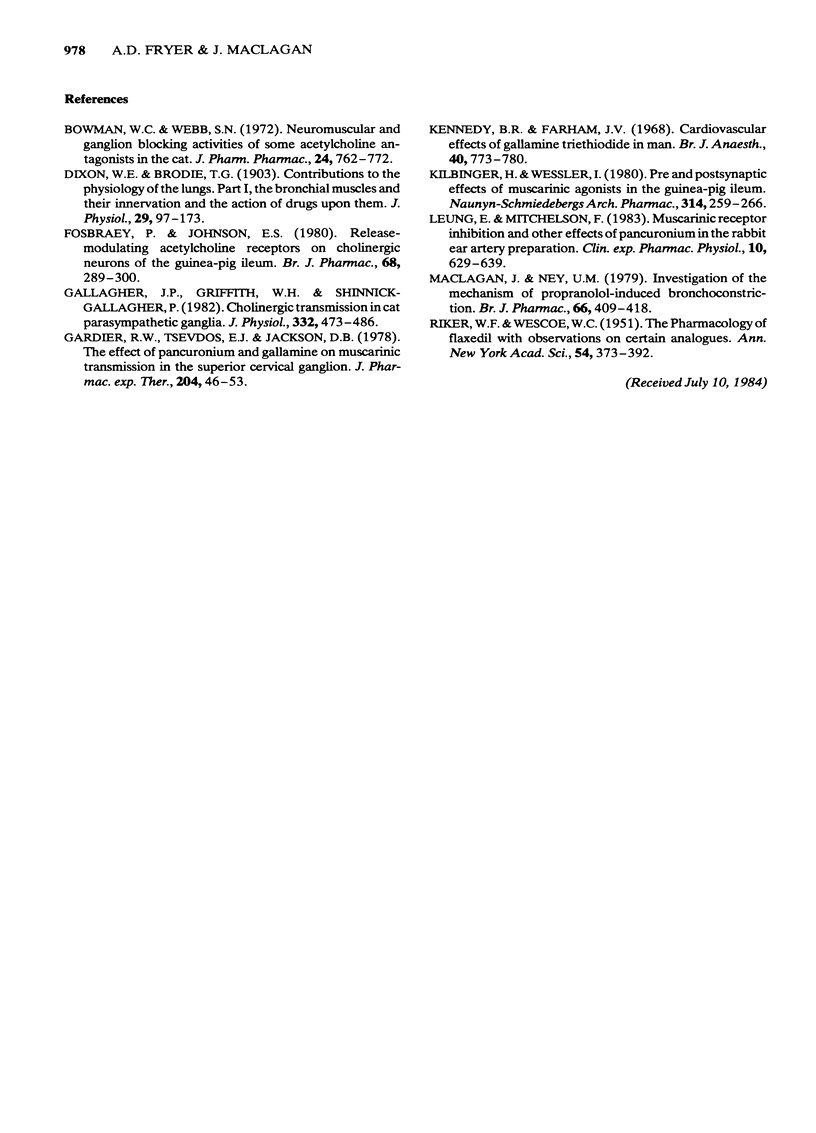Abstract
In anaesthetized guinea-pigs, gallamine produced a dose-related potentiation of the bronchoconstriction induced by electrical stimulation of the cervical vagus nerves; (+)-tubocurarine and suxamethonium lacked this effect. The bronchoconstriction produced by intravenous injection of acetylcholine or histamine, however, was not potentiated by gallamine. Vagally-induced bradycardia was abolished by gallamine, confirming antagonism of the effect of acetylcholine on muscarinic receptors in the heart. The muscarinic receptor agonist pilocarpine, had the opposite effect to gallamine in the lung as it inhibited vagally-mediated bronchoconstriction. Pretreatment of guinea-pigs with either guanethidine or propranolol did not affect the gallamine-induced potentiation of vagally-mediated bronchoconstriction. The potentiating effect of gallamine in the lung can be explained by blockade of inhibitory, muscarinic receptors located in the parasympathetic nerves supplying the lungs.
Full text
PDF





Selected References
These references are in PubMed. This may not be the complete list of references from this article.
- Bowman W. C., Webb S. N. Neuromuscular blocking and ganglion blocking activities of some acetylcholine antagonists in the cat. J Pharm Pharmacol. 1972 Oct;24(10):762–772. doi: 10.1111/j.2042-7158.1972.tb08880.x. [DOI] [PubMed] [Google Scholar]
- Dixon W. E. Contributions to the physiology of the lungs: Part I. The bronchial muscles, their innervation, and the action of drugs upon them. J Physiol. 1903 Mar 16;29(2):97–173. doi: 10.1113/jphysiol.1903.sp000947. [DOI] [PMC free article] [PubMed] [Google Scholar]
- Fosbraey P., Johnson E. S. Release-modulating acetylcholine receptors in cholinergic neurones of the guinea-pig ileum. Br J Pharmacol. 1980 Feb;68(2):289–300. doi: 10.1111/j.1476-5381.1980.tb10418.x. [DOI] [PMC free article] [PubMed] [Google Scholar]
- Gallagher J. P., Griffith W. H., Shinnick-Gallagher P. Cholinergic transmission in cat parasympathetic ganglia. J Physiol. 1982 Nov;332:473–486. doi: 10.1113/jphysiol.1982.sp014425. [DOI] [PMC free article] [PubMed] [Google Scholar]
- Gardier R. W., Tsevdos E. J., Jackson D. B. The effect of pancuronium and gallamine on muscarinic transmission in the superior cervical ganglion. J Pharmacol Exp Ther. 1978 Jan;204(1):46–53. [PubMed] [Google Scholar]
- Kennedy B. R., Farman J. V. Cardiovascular effects of gallamine triethiodide in man. Br J Anaesth. 1968 Oct;40(10):773–780. doi: 10.1093/bja/40.10.773. [DOI] [PubMed] [Google Scholar]
- Kilbinger H., Wessler I. Pre- and postsynaptic effects of muscarinic agonists in the guinea-pig ileum. Naunyn Schmiedebergs Arch Pharmacol. 1980 Nov;314(3):259–266. doi: 10.1007/BF00498547. [DOI] [PubMed] [Google Scholar]
- Leung E., Mitchelson F. Muscarinic receptor inhibition and other effects of pancuronium in the rabbit ear artery preparation. Clin Exp Pharmacol Physiol. 1983 Nov-Dec;10(6):629–639. doi: 10.1111/j.1440-1681.1983.tb00850.x. [DOI] [PubMed] [Google Scholar]
- Maclagan J., Ney U. M. Investigation of the mechanism of propranolol-induced bronchoconstriction. Br J Pharmacol. 1979 Jul;66(3):409–418. doi: 10.1111/j.1476-5381.1979.tb10846.x. [DOI] [PMC free article] [PubMed] [Google Scholar]
- RIKER W. F., Jr, WESCOE W. C. The pharmacology of Flaxedil, with observations on certain analogs. Ann N Y Acad Sci. 1951 Oct;54(3):373–394. doi: 10.1111/j.1749-6632.1951.tb39932.x. [DOI] [PubMed] [Google Scholar]


